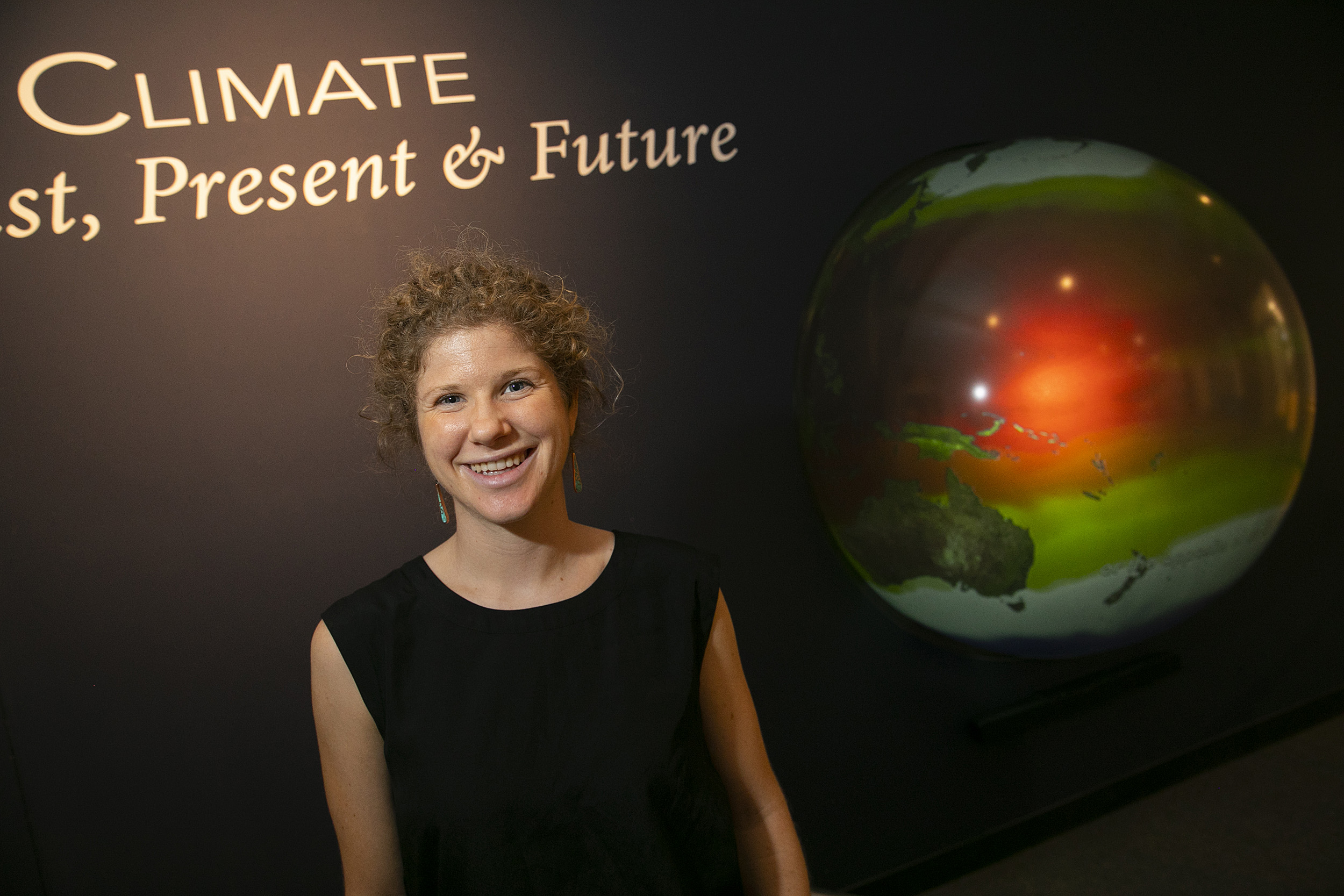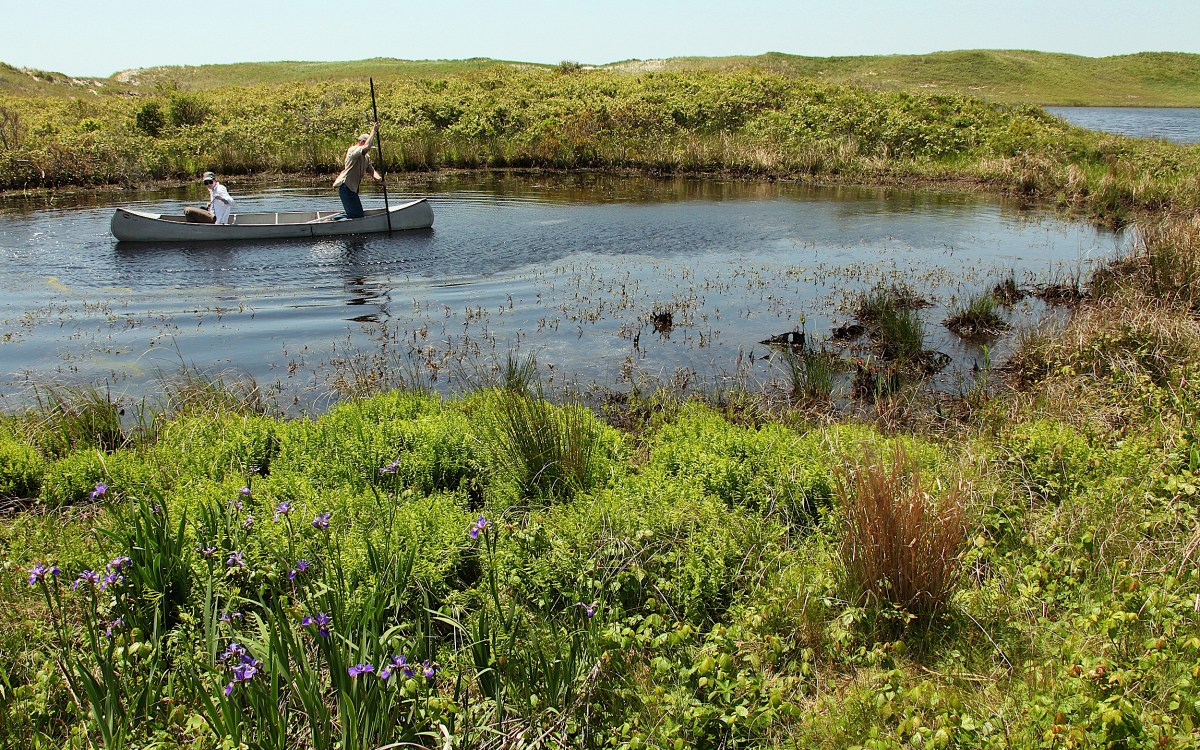
Tamara Pico is the author of a new study which offers more precise dating for the flooding in the Bering Strait that occurred more than 11,000 years ago.
Jon Chase/Harvard Staff Photographer
From ancient flooding, modern insights
Study uses long-ago record of Bering Strait flooding to understand how ice sheets responded to climate change
The debate has raged in the world of paleo-climate research for years: When did the land bridge that once connected Asia and North America flood?
Some researchers say the presence of Pacific species in the Arctic makes the case for some 13,000 years ago. Others, however, point to sediment cores collected from the area as evidence that the flooding occurred later, about 11,500 years ago.
For Tamara Pico, the issue is not which date is right, but how both — taken together — paint a fuller picture of how sea levels changed in the strait over more than 1,500 years.
Based on that picture, Pico, Ph.D. ’19, was able to deduce how the ice sheets that covered North America responded to the warming climate, and how their melting might have contributed to climate changes. The study is described in a Feb. 26 paper in Science Advances.
“If we can understand sea-level change in the region around the ice sheet, we can infer the past history of the ice sheet,” said Pico, who worked in the lab of Jerry Mitrovica, Frank B. Baird Jr. Professor of Science, as a graduate student and is now a National Science Foundation postdoctoral scholar at Caltech. “For me, the central question of this study is about understanding when and how much ice melted [during the deglaciation], because if you don’t know how much ice volume melted, then you don’t know how ice sheets are responding to a changing climate, and that’s really the fundamental question.”
Melting ice sheets, however, may only be the tip of the iceberg (pun intended). A better understanding of Bering Strait flooding may offer fresh insights into the sea-level differences.
“Nobody really thinks about using the record of the connection between two oceans as a sea-level record,” Pico said. “But the observations suggest there is a connection early and a connection late. If we trust both of those data sets, then that means there was either a sea level fall or a standstill over that time, and in order to explain that, you need a melting ice sheet nearby.”
But how can a melting ice sheet lead to sea level falling? The answer, Pico said, is gravity.
The ice sheets that once covered North America were so massive — some were taller than 9,800 feet, or nearly 2 miles — that they actually perturbed the planet’s gravitational field, attracting ocean water. As they melted and that effect waned, Pico said, local sea levels would drop.
Elsewhere in the world, though, the story at the time was very different.
“Globally, we know sea level during this period is rising at something like 10 meters per 1,000 years, so it’s not as if global sea level had stopped rising,” Pico said. “It rises quite a bit over that time, so for local sea level to have stayed the same you need this effect.
“If you don’t know how much ice volume melted, then you don’t know how ice sheets are responding to a changing climate, and that’s really the fundamental question.”
Tamara Pico
“This time period, from 13,000 years ago to 11,500 years ago, also marks the Younger Dryas cooling period,” Pico said. “Over the last deglaciation … for the most part, temperatures were rising, but based on the Greenland ice-core record, temperatures actually seem to drop over this period, and that’s always been an enigma.”
Since the 1980s, the prevailing explanation for the cooling has been that a massive influx of cold, fresh water might have led to a change in ocean circulation patterns that weakened the oceans’ ability to act as a global heat sink.
The work of Pico and colleagues suggests that the melting North American ice sheets could have pumped a steady stream of fresh water into the Arctic — enough to sustain the Younger Dryas for nearly 2,000 years.
“According to the sea-level record in the Bering Strait, you would need to melt a lot of ice — the equivalent of between 10 and 15 meters of global sea-level rise — and this melting is happening over that entire time,” she said. “So this might be able to explain why the Arctic cooled for that period. Rather than it being a lake that had an outburst flood, it was just the melting ice sheet.”
Despite the sea-level data from the Bering Strait, that hypothesis hasn’t been universally accepted, Pico said, in part because the study places the melting of the “saddle” — the region where the two North American ice sheets meet — at a time significantly later than many believe it was.
“Most people assume that happened earlier because, even though sea level was rising quickly around the world, there was a period — called meltwater pulse 1A — when it rose especially fast,” she said. “In that period, sea level rose by 15 to 20 meters in under 300 years. That would require a huge amount of ice melt, and many people have assumed the saddle melted during this time.
“But that assumed history doesn’t fit the Bering Strait sea-level record,” she continued. “When we use that flooding history as a sea-level record, it’s not consistent with what everyone had assumed before.”
Ultimately, Pico said, the study offers scientists a fuller picture of a key point in the evolution of the planet from the last glacial maximum to today.
“That’s what’s been really fun for me about this study,” she said. “It pulls so much together — ocean circulation, the timing of the flood, and also the ice history and how that feeds back into ocean circulation. For paleoclimate, it brings a lot of different parts of the story together.”
This research was supported with funding from the National Science Foundation and Harvard University.







